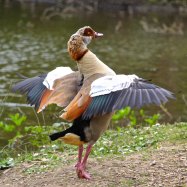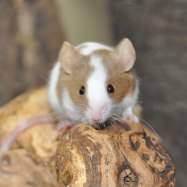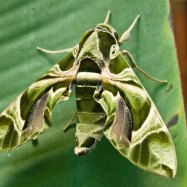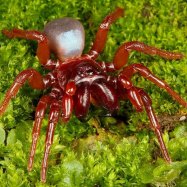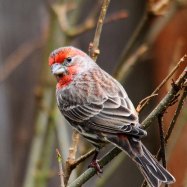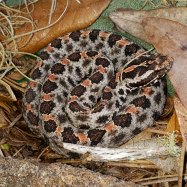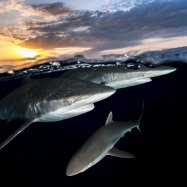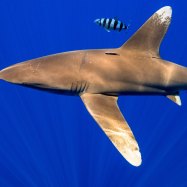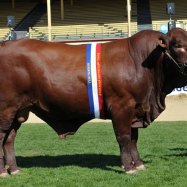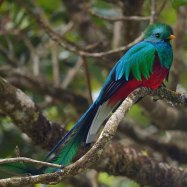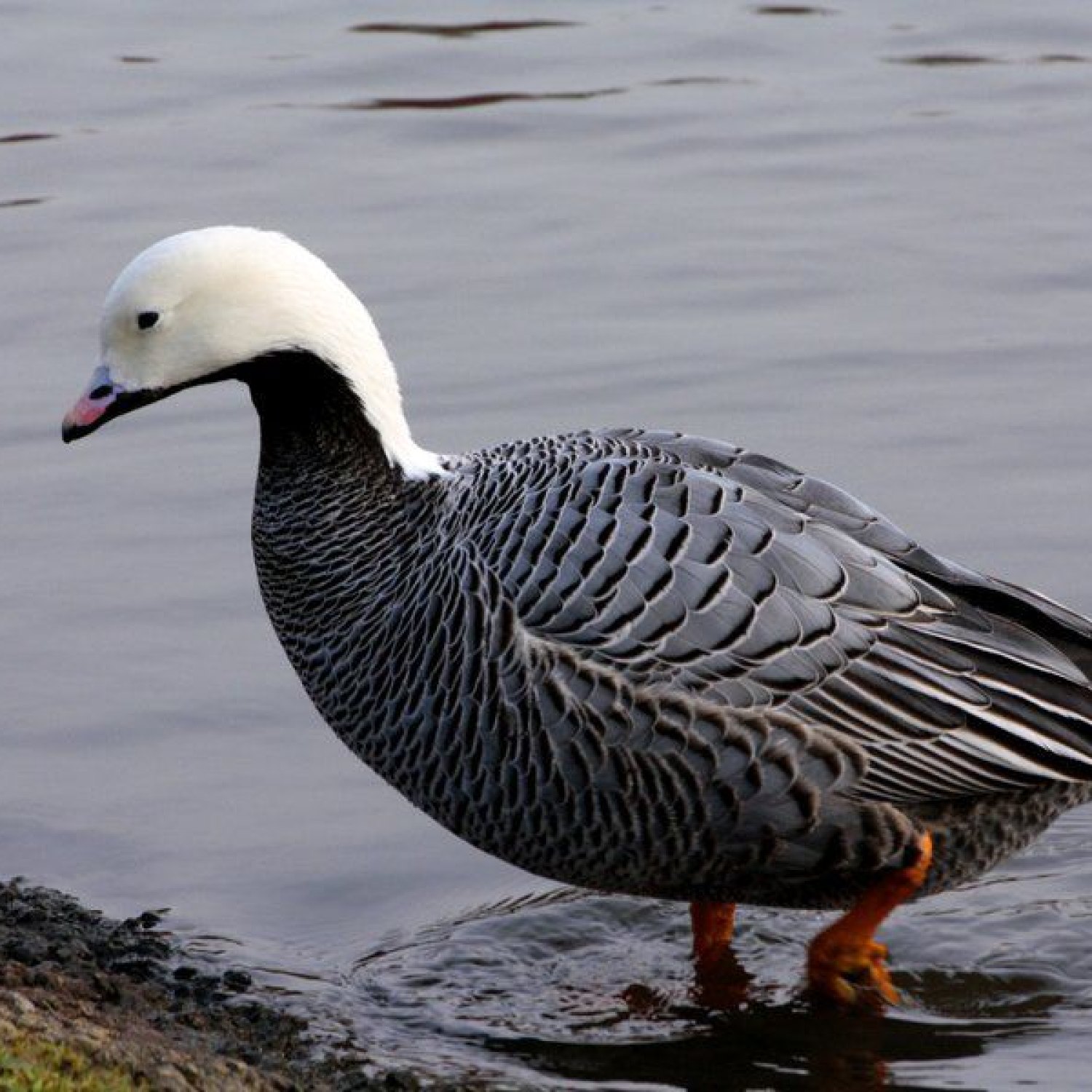
Emperor Goose
58 - 79 cm (23 - 31 inches)
The Emperor Goose is a beautiful bird found in Alaska. It belongs to the Anatidae family, and can grow up to 31 inches. Its body is stout with a short neck, making it a medium-sized goose. Explore the stunning landscape of Alaska and spot this magnificent bird in its natural habitat! #EmperorGoose #Alaska #Anatidae
Animal Details Summary:
Common Name: Emperor Goose
Kingdom: Animalia
Habitat: Coastal tundra, marshes, and estuaries
The Fascinating Emperor Goose: The King of Coastal Tundra
The world is full of unique and diverse animal species, each with its own set of fascinating characteristics. One such remarkable bird is the Emperor Goose, whose scientific name is Chen canagica. This stunning creature's presence is limited to the coastal tundra, marshes, and estuaries of North America, particularly in Alaska. With its striking coloration, medium-sized body, and interesting feeding habits, the Emperor Goose stands out as one of the most captivating birds in the animal kingdom Emperor Goose.The Classification of the Emperor Goose
Before we dive into the Emperor Goose's features, let's first get to know its classification. As with all living organisms, this bird belongs in a specific kingdom, phylum, class, order, and family. The Emperor Goose is classified under the kingdom Animalia, the phylum Chordata, the class Aves, the order Anseriformes, and the family Anatidae.Being a part of the Anseriformes order, the Emperor Goose is closely related to other waterfowl, such as ducks, swans, and geese. However, it stands out as the only known living species in the genus Chen. This classification indicates that the Emperor Goose is a truly unique and special bird.
The Habitat and Geographical Distribution of the Emperor Goose
As mentioned earlier, the Emperor Goose is native to North America, particularly in Alaska. It is primarily found in coastal tundra regions, which are characterized by marshes and estuaries. These areas provide an ideal habitat for the Emperor Goose, as they offer ample food sources and protection from predators Electric Catfish.These birds are migratory, spending the summer breeding season in Alaska and then migrating south for the winter. During this time, they can be found in various parts of North America, from British Columbia to California. However, the Emperor Goose's reproductive cycle is tied to the coastal tundra, which is why they always return to their breeding grounds.
The Emperor Goose's Diet and Feeding Method
The Emperor Goose is mainly herbivorous, which means that it primarily feeds on plants. These birds are known to have a diverse diet, consuming a variety of plant matter, including leaves, stems, roots, and seeds. They usually forage for food in shallow waters, using their short, stout necks to reach underwater plants.Interestingly, the Emperor Goose also has a unique feeding method. While most geese are known to graze on land, the Emperor Goose is known for its diving abilities. It can plunge into the water and swim underwater to reach its food, making it one of the few diving geese in the world.
The Physical Characteristics of the Emperor Goose
The Emperor Goose is a stunning bird with striking coloration. Its body is mainly dark brown, with a white head and neck. This color pattern gives it a distinct and regal appearance, hence the name "Emperor" Goose. The male and female Emperor Goose might look similar, but the male is slightly bigger.These birds have a medium-sized body, measuring between 58 - 79 cm (23 - 31 inches) in length and weighing around 2.7 - 4 kg (6 - 9 lbs). They have a stout body and a short neck, giving them a compact and robust appearance. Their wings are broad and rounded, which helps them with their diving and swimming abilities.
The Emperor Goose's Country of Origin and Uniqueness
The Emperor Goose's country of origin can be traced back to two places - the United States and Russia. These birds are found in the western portion of Alaska and the neighboring regions of Russia. However, their numbers have significantly decreased in Russia, making Alaska the primary home of the Emperor Goose.One of the Emperor Goose's most unique characteristics is its limited range. Unlike most birds that can be found in various parts of the world, the Emperor Goose is restricted to the coastal tundra of North America. This makes it an elusive and intriguing bird for birdwatchers and nature enthusiasts.
The Conservation Status of the Emperor Goose
The Emperor Goose is currently classified as a Least Concern species on the International Union for Conservation of Nature (IUCN) Red List. This means that their population is relatively stable, and there is currently no significant threat to their survival.However, this was not always the case. In the early 20th century, the Emperor Goose's numbers drastically declined due to excessive hunting. Thanks to conservation efforts and regulations, the Emperor Goose population has recovered, and their numbers have steadily increased. Today, they are protected by law, and hunting of these birds is strictly prohibited.
In Conclusion
The Emperor Goose is truly a remarkable creature, with its striking coloration, unique feeding habits, and limited range. Their conservation success story is proof of the positive impact of conservation efforts. While they may not be the most well-known bird species, the Emperor Goose's presence in the coastal tundra adds to the diversity and beauty of the animal kingdom.These birds are a testament to the importance of preserving and protecting our natural world. As we continue to learn more about the Emperor Goose, we are reminded of the need to appreciate and coexist with these magnificent creatures. Let us continue to work towards a future where all animals, including the Emperor Goose, can thrive and flourish.

Emperor Goose
Animal Details Emperor Goose - Scientific Name: Chen canagica
- Category: Animals E
- Scientific Name: Chen canagica
- Common Name: Emperor Goose
- Kingdom: Animalia
- Phylum: Chordata
- Class: Aves
- Order: Anseriformes
- Family: Anatidae
- Habitat: Coastal tundra, marshes, and estuaries
- Feeding Method: Herbivorous
- Geographical Distribution: North America
- Country of Origin: United States and Russia
- Location: Alaska
- Animal Coloration: Mainly dark brown with a white head and neck
- Body Shape: Medium-sized goose with a stout body and a short neck
- Length: 58 - 79 cm (23 - 31 inches)
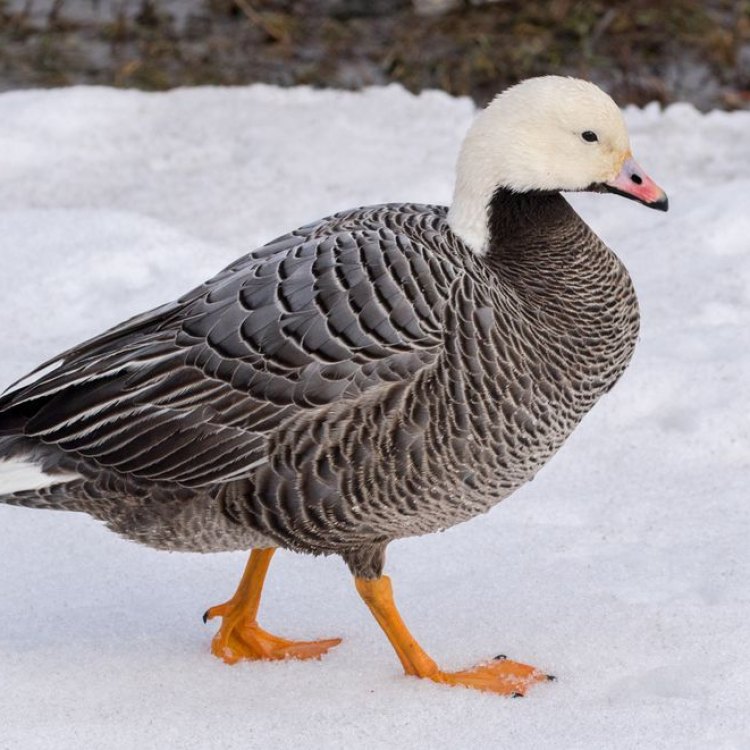
Emperor Goose
- Adult Size: Medium
- Average Lifespan: 10 - 15 years
- Reproduction: Monogamous
- Reproductive Behavior: Breeding pairs form long-term bonds
- Sound or Call: Loud honking calls
- Migration Pattern: Migratory
- Social Groups: Usually seen in small flocks
- Behavior: Relatively shy and wary
- Threats: Habitat loss, hunting, and climate change
- Conservation Status: Near Threatened
- Impact on Ecosystem: Important seed dispersers
- Human Use: Hunted for sport and food
- Distinctive Features: Distinctive white head and neck with dark brown body
- Interesting Facts: Emperor Geese are highly prized by hunters for their striking plumage and challenging hunting behavior. They are known for their loud honking calls. Emperor Geese have special salt glands in their bill that allow them to drink saltwater.
- Predator: Arctic foxes, gulls, and eagles
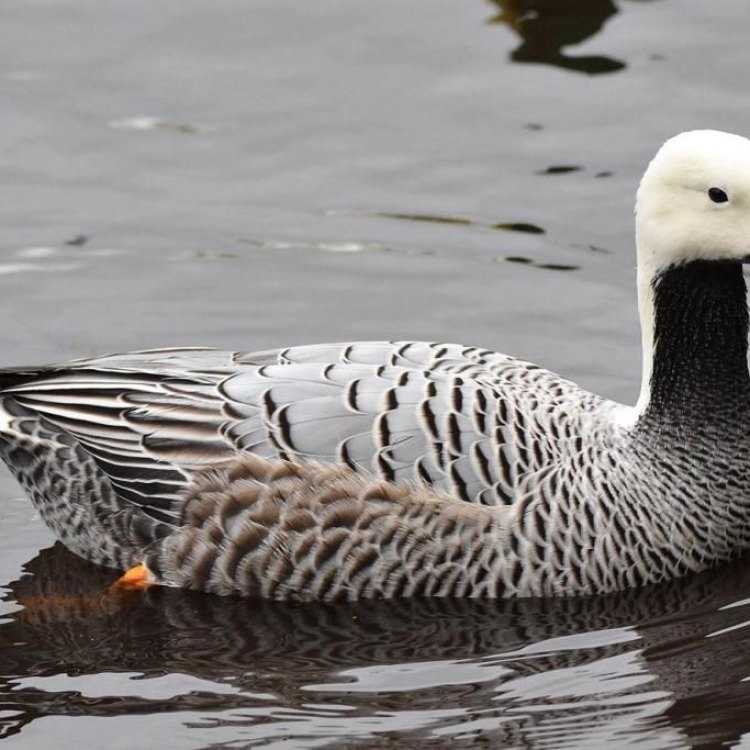
Chen canagica
The Mighty Emperor Goose: An Icon of the North
When you think of geese, the image of a large, plump waterbird often comes to mind. However, not all geese are created equal. Among the diverse species of geese, there is one that stands out for its unique features and intriguing behavior - the Emperor Goose. With its distinctive white head and neck, and loud honking calls, the Emperor Goose is an icon of the North, but its status in the wild is under threat PeaceOfAnimals.Com. In this article, we will explore the fascinating world of the Emperor Goose, its role in the ecosystem, and the challenges it faces in today's world.At first glance, the Emperor Goose may not seem like anything special - a medium-sized bird with a dark brown body. But its striking features lie in its head and neck, which are adorned in a beautiful white plumage. This distinct coloration earned the Emperor Goose its name, as it reminded early explorers of the white and gold attire of an emperor. These geese, native to the coastal regions of Alaska and Russia, are known for their loud honking calls, which can be heard from a distance. Their calls serve as a way of communication within their flock and can be heard throughout the breeding season.
The Emperor Goose spends most of its life near water and is an integral part of the northern coastal ecosystem. As migratory birds, they spend their summers in the tundra and move to coastal estuaries and bays for the winter. These movements allow them to access a variety of food sources, from aquatic vegetation and invertebrates to grasses and seeds Emperor Angelfish. And speaking of food, Emperor Geese are not just important for the ecosystem, but also for humans. They have been hunted for sport and food for centuries, and their striking plumage and challenging hunting behavior make them a highly prized target for hunters.
But these geese are not just important for hunting; they also play a crucial role in their ecosystem. As seed dispersers, they help maintain the diversity of plant life in their habitats. Their droppings contain seeds from the plants they eat, which can be carried to different areas, allowing for the growth and dispersal of new plants. This is especially vital in areas facing habitat loss due to human development.
One of the most interesting aspects of Emperor Geese is their reproductive behavior. They are monogamous birds, forming long-term bonds with their partners. During the breeding season, which typically starts in late May, breeding pairs separate themselves from the flock and claim a territory for their nest. In dominant pairs, the male takes on the responsibility of fending off potential threats, while the female incubates the eggs. When the chicks hatch, both parents play a role in their care and protection.
This protective behavior is necessary, as the Emperor Goose is considered a relatively shy and wary bird. They are usually seen in small flocks, and if disturbed, they will take flight and emit their loud honks as a warning. Their unique behavior makes them a delight to observe in the wild, but unfortunately, their population is declining, earning them a "Near Threatened" status on the IUCN Red List.
The decline of Emperor Geese can be attributed to various threats, the most prominent being habitat loss. As human development and oil and gas exploration continue to expand in their habitat, these birds are losing crucial nesting grounds and food sources. Another significant threat is hunting, as the demand for their striking plumage and challenging hunting behavior remains high. Climate change is also a concern, as it affects the availability of food and the timing of their breeding season, leading to a decline in their reproductive success.
The impact of these threats on the Emperor Goose extends far beyond their own survival. As seed dispersers, their decline can have a cascading effect on the plant life in their habitats, affecting other organisms that depend on these plants for food and shelter. Additionally, the loss of these geese can also have an impact on the cultural and spiritual significance they hold for the indigenous people of Alaska and Russia.
Efforts are being made to protect the Emperor Goose and conserve its habitat. One such effort is the establishment of protected areas, which provide safe havens for these birds to breed and forage. Organizations like the Alaska Department of Fish and Game and the U.S. Fish and Wildlife Service also work to monitor and manage the population of Emperor Geese. And while hunting for sport and food is still legal, strict regulations and quotas are in place to ensure sustainable practices.
The Emperor Goose is a fascinating bird that plays an important role in the northern coastal ecosystem. With its unique features, behavior, and cultural significance, it is no wonder that it has captured the fascination of many. But with its population facing threats of habitat loss, hunting, and climate change, it is up to us to take action and ensure the survival of this magnificent bird. By protecting and preserving their habitats, we can help secure a future for the Emperor Goose and the delicate balance they maintain in the ecosystem.
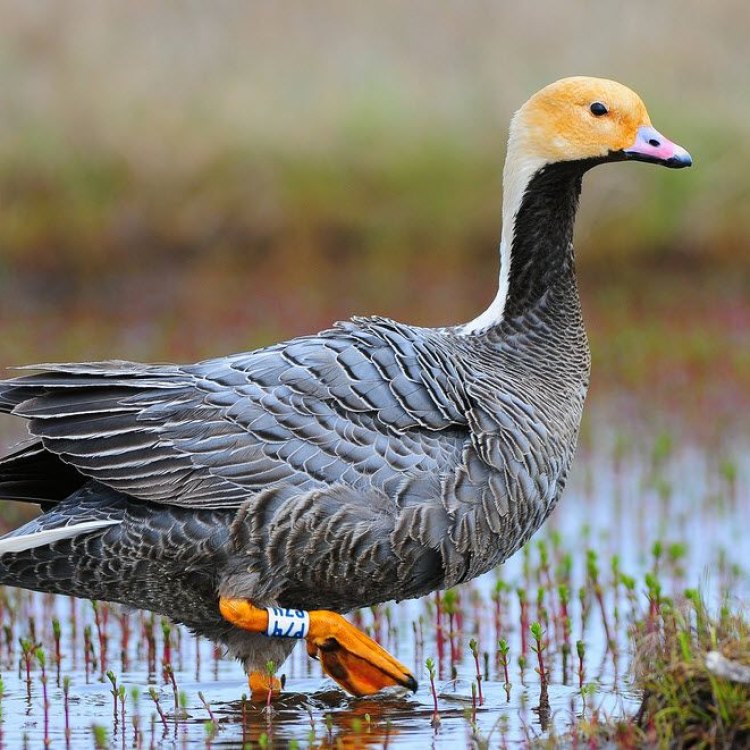
The Fascinating Emperor Goose: The King of Coastal Tundra
Disclaimer: The content provided is for informational purposes only. We cannot guarantee the accuracy of the information on this page 100%. All information provided here may change without prior notice.

